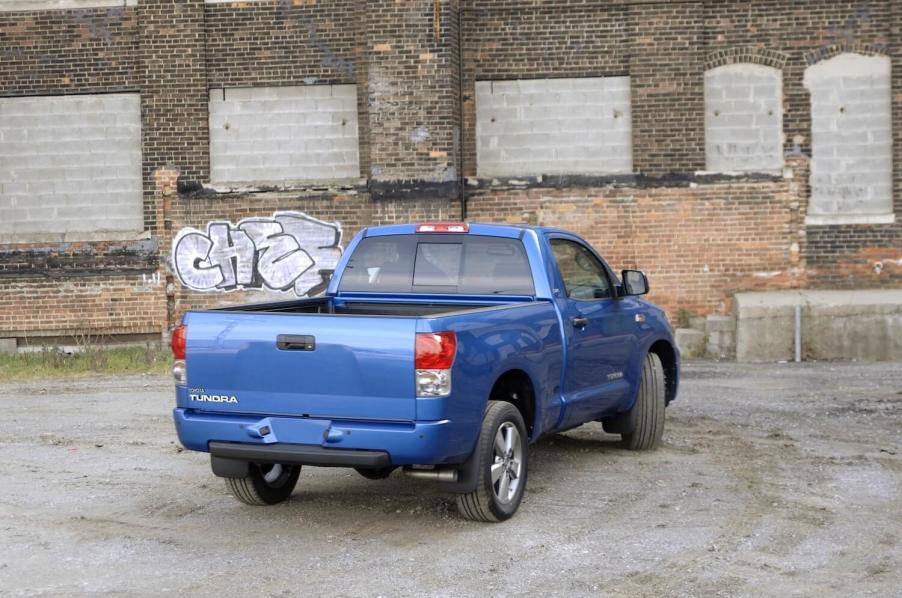
3 Common Toyota Tundra Problems You May Need a Professional to Fix
The Toyota Tundra is a relatively reliable truck. But even so, it has its fair share of common issues. It is also not a difficult truck to work on. I actually wrote up three common Toyota Tundra problems you may be able to fix yourself. That said, the Tundra also has a few issues that are very difficult to repair and probably best left to a professional:
- Wheel hub bearing wear
- Cracked exhaust manifold
- Air pump failure
Wheel hub bearing wear

Many owners complain about issues with the front end of their second-generation Toyota Tundras. Is this because the trucks are poorly built? Or is it because front-end components wear out over time, and the rest of the Tundra lasts so long? You can decide that for yourself.
When my colleague Amanda Cline wrote up the Toyota Tundra complaints shared by the most owners, the lower ball joint in the steering linkage made the list. Then when 1A Auto’s resident mechanic filmed a Youtube video going over the five worst second-generation Tundra problems, he named the front wheel hub bearing wearing out.
You can easily test your wheel bearing by jacking up your truck and seeing if you can rock the tire back and forth. You can feel a worn wheel bearing click as it rocks. You may also be able to hear the bearing if you spin the tire. Finally, if you can’t hear it, you may be able to feel vibrations through the front coil spring.
Now I know someone in the comments is going to say they re-did their Tundra’s front end themself–twice. But here’s the deal: if you have one wheel bearing going, you should replace both. And you should look at rebuilding the front end while you’re in there. I have redone one front end myself, and next time I’m hiring it out. Pulling old bearings and pressing new ones in place is a difficult job best left to a professional.
Cracked exhaust manifold

Another relatively common Toyota Tundra issue is a cracked exhaust manifolds. Because the truck has a V-shaped engine, it has one exhaust manifold running from both sides of the engine, down by the wheel well, and back to the exhaust pipes.
If the manifold cracks, you’ll see a check engine light. But you’ll also have an exhaust leak in front of the cabin, which means the truck is unsafe to drive.
Again, someone probably replaces exhaust manifolds themself. And the job is easier than rebuilding a front end. But the exhaust manifold is bolted to the engine, and the amount of heat it displaces means these bolts rust tightly in place. Breaking one off in your engine block can get expensive fast. So again, this is probably a job best left to a professional.
Secondary air injector pump failure

Seconday air injector pump failure is by far the most complained about Toyota Tundra problem. So what is it? This pump injects air into the Tundra’s exhaust. It does this while the engine is warming up, for the purpose of reducing emissions.
If one of the two secondary air injector pumps fails, it won’t affect how your truck runs at all. But it will throw a check engine light.
Early second-generation Toyota Tundras had these pumps mounted on top of the engine and beneath the exhaust manifold. When it fails, getting in there to replace it is a pain that is best left to a professional. But wait, there’s more.
Halfway through the second-generation Tundra’s run, Toyota had the bright idea of moving these air pumps out to both the fender wells, one for each manifold. There’s actually a hatch to get to them, and it is relatively easy to swap them out. So on certain trucks, this may be a job you can take on yourself.
Next, learn about the only Toyota Tundra model year to ever receive an ‘average’ score for reliability, or watch 1A Autos rundown of common second-generation Toyota Tundra problems in the video below:



